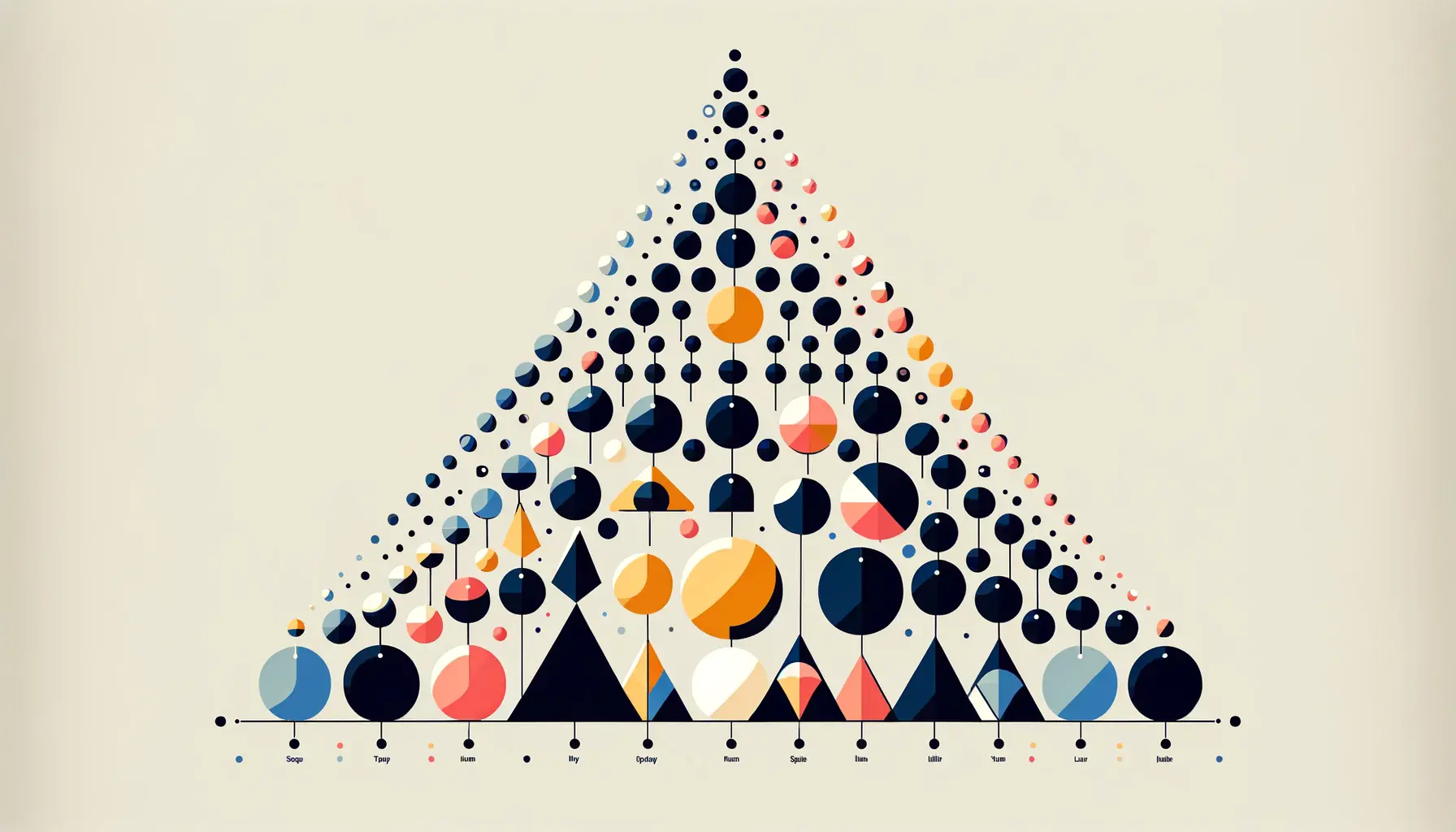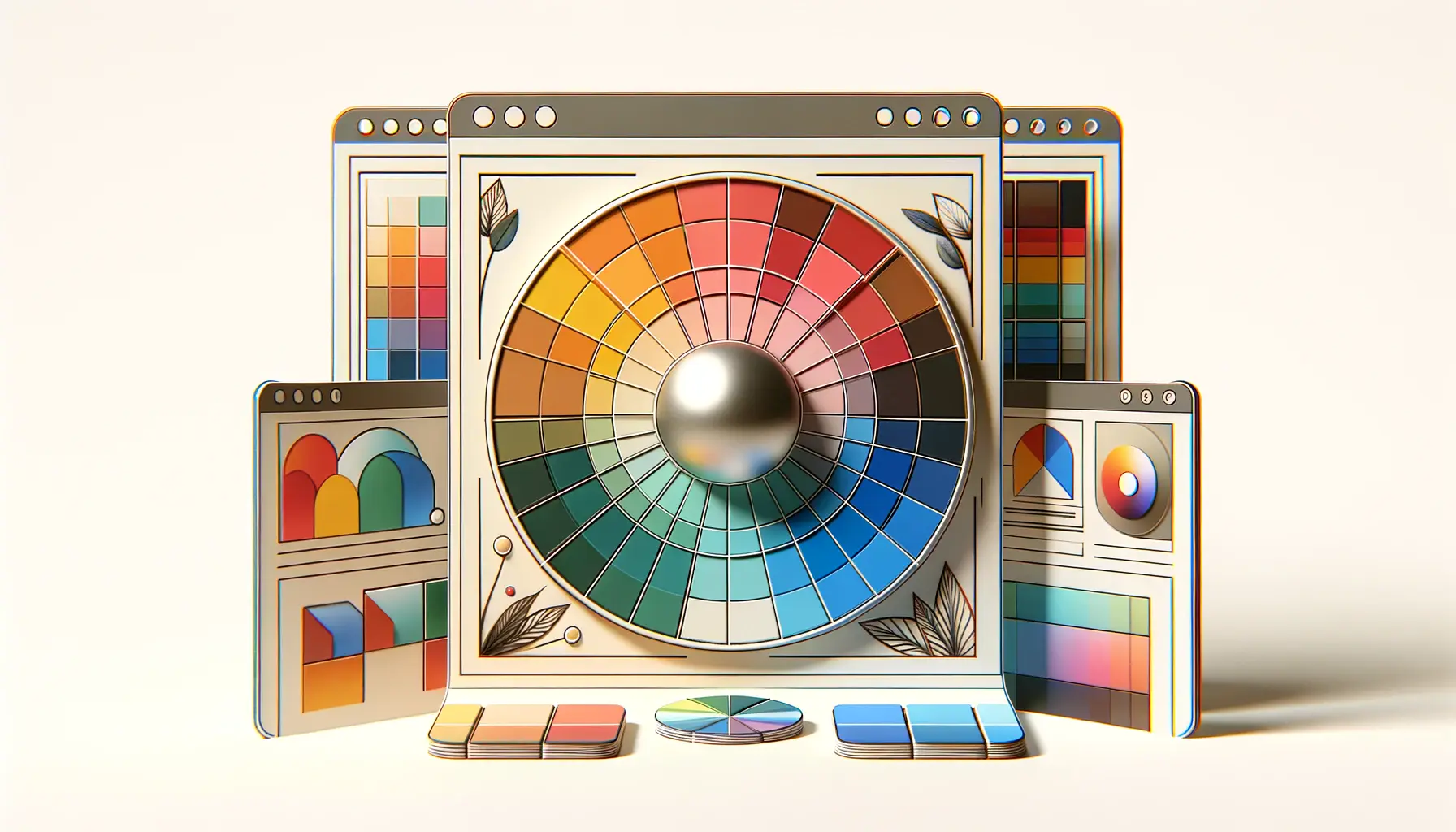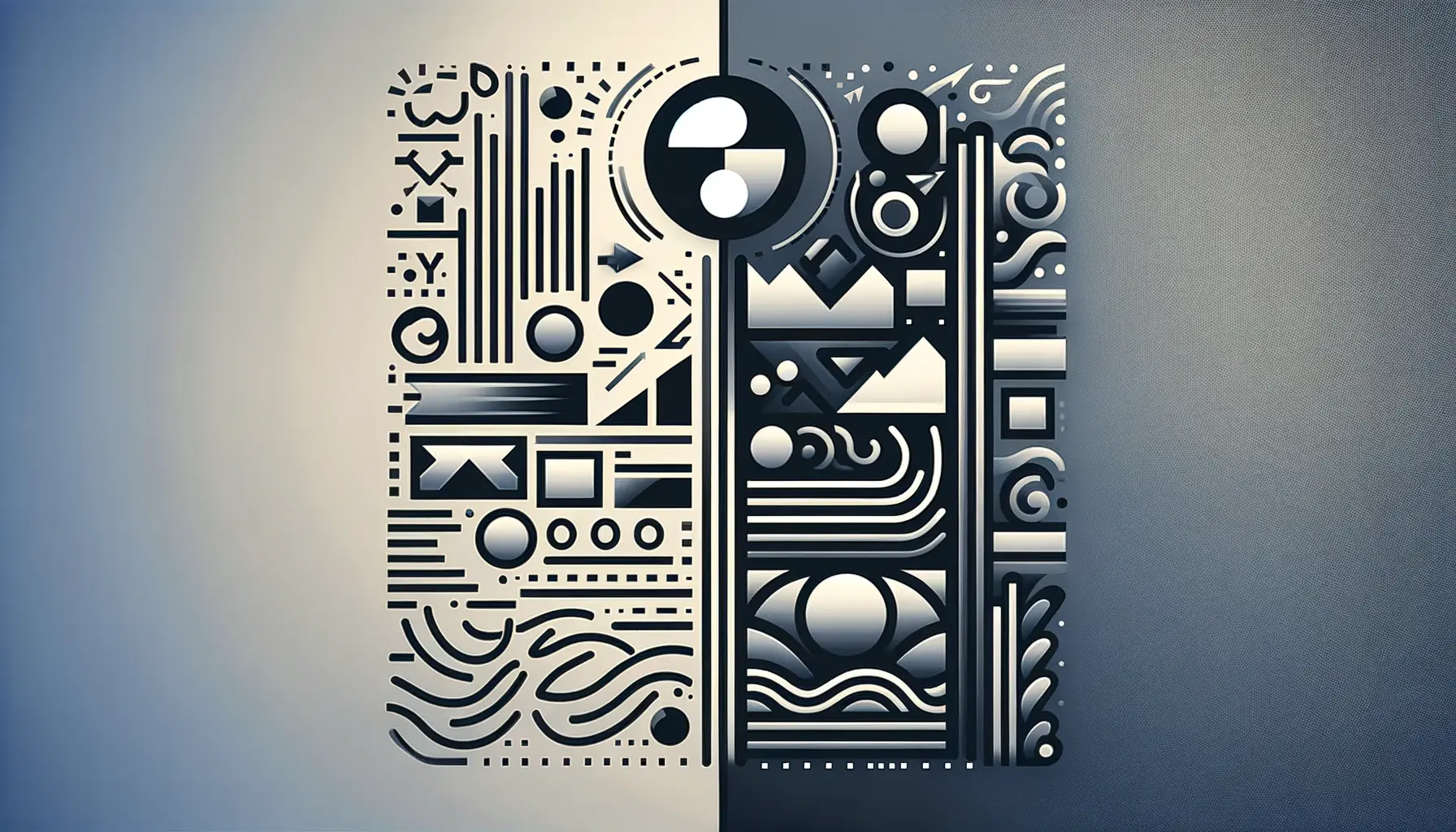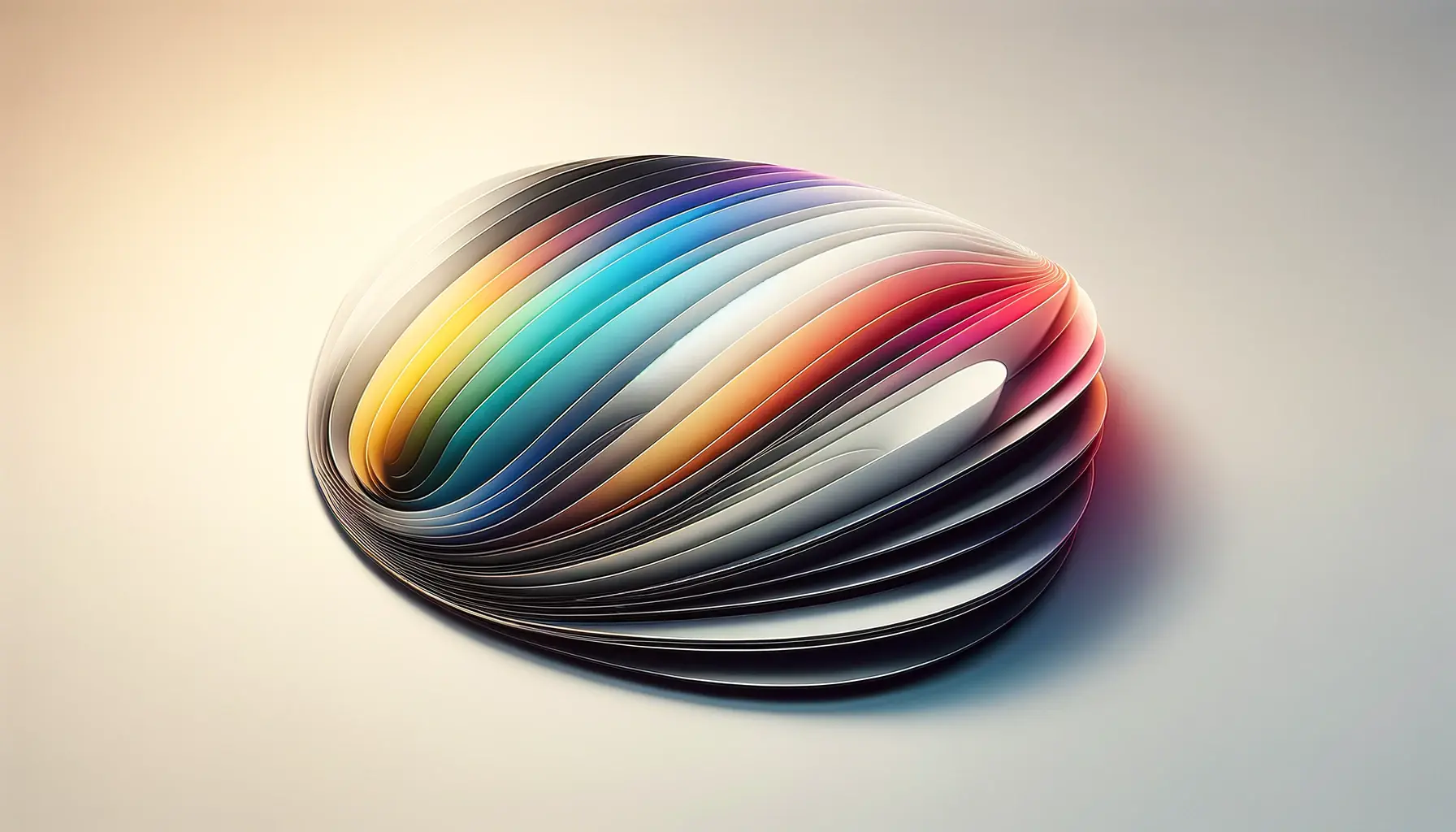Understanding and applying color theory in web design can transform a simple website into a captivating experience for visitors.
Among the various color schemes, the split-complementary color scheme stands out for its dynamic balance and visual appeal.
This scheme, a variation of the traditional complementary color scheme, offers a rich palette that can enhance the user interface and overall aesthetic of a website without overwhelming the viewer.
By carefully selecting and implementing split-complementary colors, designers can create websites that are not only visually appealing but also conducive to user engagement and conversion.
The split-complementary color scheme is particularly valued for its versatility and ease of use.
It involves choosing one base color and two adjacent tertiary colors on the color wheel that complement the base.
This creates a harmonious balance that is less intense than a direct complementary color scheme, allowing for more creative freedom in design without sacrificing visual harmony.
The strategic use of these colors can guide visitors’ attention to key elements, improve readability, and evoke the desired emotional response, making it a powerful tool in the web designer’s arsenal.
- Understanding Split-Complementary Colors
- Implementing Split-Complementary Colors in Web Design
- Color Psychology in Split-Complementary Schemes
- Optimizing User Experience with Color
- Visual Storytelling with Split-Complementary Colors
- Branding Consistency Across Platforms
- Trends and Innovations in Color Usage
- Conclusion: Harnessing the Power of Split-Complementary Colors in Web Design
- FAQs on Split-Complementary Colors in Web Design
Understanding Split-Complementary Colors
Basics of Split-Complementary Scheme
The split-complementary color scheme is a sophisticated approach to color selection that offers a wider range of colors while maintaining balance and harmony.
This scheme is derived from the traditional complementary color scheme but with a twist.
Instead of using two colors that are directly opposite each other on the color wheel, the split-complementary scheme includes the two colors adjacent to the base color’s complement.
This results in a three-color palette that is visually appealing and less aggressive than the standard complementary scheme, making it ideal for web design where user experience is paramount.
For example, if you choose blue as your base color, its direct complement on the color wheel would be orange.
In a split-complementary scheme, instead of using orange, you would use the colors on either side of orange, such as yellow-orange and red-orange.
This combination offers a vibrant yet balanced palette that can enhance the visual appeal of a website.
Advantages in Web Design
Employing a split-complementary color scheme in web design brings several advantages.
Firstly, it provides a harmonious color selection that is pleasing to the eye, which is essential for keeping visitors engaged and reducing bounce rates.
The use of three related yet distinct colors adds depth and interest to the design without causing visual tension.
This scheme also allows for flexibility in highlighting different elements of the website, such as call-to-action buttons, navigation menus, and key content areas, thereby improving user navigation and the overall user experience.
Moreover, the split-complementary scheme is known for its ability to create a dynamic and inviting atmosphere on a website.
By carefully selecting a base color that represents the brand and complementary colors that enhance visual appeal, designers can craft websites that stand out in the digital landscape.
This color scheme can be adapted to various design styles, from minimalist to elaborate, making it a versatile choice for web designers aiming to convey specific brand messages and emotions through color.
The split-complementary color scheme is a testament to the power of color in web design. By understanding and applying this scheme, designers can create visually engaging and harmonious websites that captivate and retain visitors.
Implementing Split-Complementary Colors in Web Design
Integrating split-complementary colors into web design requires a strategic approach to ensure the color scheme enhances the website’s usability and aesthetic appeal.
The process involves selecting a base color that aligns with the brand’s identity, then choosing two adjacent complementary colors that enrich the visual composition.
Here’s how to effectively implement this color scheme in your web design projects:
Firstly, identify the base color that best represents the brand or the message you wish to convey.
This color will dominate your design and set the tone for the user’s visual experience.
Once the base color is established, use the color wheel to find its complementary color and then select the two colors adjacent to this complement.
These will serve as your accent colors, adding depth and interest to your design.
Steps for Color Selection
- Choose Your Base Color: Consider the brand’s personality, the emotions you want to evoke, and the actions you wish to encourage. This color will be the most visible across your website.
- Identify Complementary Colors: Use a color wheel to find the direct complement of your base color, then select the two adjacent colors for a balanced palette.
- Test Color Combinations: Experiment with different shades and tints of your chosen colors to find the perfect balance. Tools like Adobe Color can be invaluable for this step.
Applying Colors to Web Elements
With your colors selected, the next step is to apply them thoughtfully across your website.
The base color should be used for major elements like the background or large sections, while the two complementary colors serve to highlight important features and guide the user’s eye.
- Navigation and Headers: Use the base color for header backgrounds, with accent colors for menu items or active page indicators.
- Call to Action (CTA) Buttons: Accent colors can make your CTAs stand out and encourage clicks. Consider using the more vibrant of the two for the most important actions.
- Links and Highlights: Utilize the accent colors to underline links or highlight key information in your content.
Remember, the goal is to create a visually cohesive and engaging environment that enhances the user experience. The split-complementary color scheme should guide the user’s attention to key elements without overwhelming them.
Finally, it’s crucial to consider the psychological impact of your chosen colors.
Colors evoke different emotions and can significantly affect user behavior.
For instance, a vibrant orange might inspire action, while a soft blue could convey trust and calm.
Understanding these associations will help you make informed decisions about where and how to apply your colors for maximum effect.
Color Psychology in Split-Complementary Schemes
The psychological impact of color on website visitors cannot be overstated.
Each color invokes specific emotions and behaviors, making the choice of colors in a split-complementary scheme crucial for aligning with the website’s goals.
Understanding color psychology helps in selecting a base color and its complements that together will foster the desired user experience and action.
For instance, if the base color is chosen for its calming effect, the complementary colors should not counteract this by being overly vibrant or aggressive.
Instead, they should reinforce the base color’s psychological impact or gently introduce additional emotions that guide the user towards a specific behavior, such as making a purchase or signing up for a newsletter.
Emotional Impact of Split-Complementary Colors
- Base Color: Sets the overall mood of the website. A color like blue might be used to instill a sense of trust and security.
- First Complementary Color: Adds visual interest and highlights important elements, such as CTAs. For example, using yellow as a complementary color to blue can attract attention without causing anxiety.
- Second Complementary Color: Offers a subtle variation to the first complementary color, providing a nuanced way to direct user attention or highlight secondary information.
By carefully selecting the colors based on their psychological effects, designers can create a web environment that not only looks cohesive but also subtly influences how visitors feel and behave on the site.
Case Study: Emotional Design in Action
Consider a website designed for a wellness brand, where the primary goal is to evoke feelings of peace and rejuvenation.
The designer might choose a soft green as the base color for its associations with health and nature.
Complementary colors could include a serene blue to reinforce the feeling of calm and a gentle yellow to introduce a sense of energy and optimism.
This combination can create a balanced, inviting space that encourages visitors to explore wellness programs or products.
In this scenario, the split-complementary scheme supports the brand’s message and goals by carefully balancing the psychological effects of each color.
The result is a design that not only looks harmonious but also aligns with the emotional journey the brand wants its visitors to experience.
The effectiveness of a split-complementary color scheme lies not just in the visual harmony it creates but also in its ability to evoke the right emotions and actions from users, making color psychology an essential consideration in web design.
Optimizing User Experience with Color
The user experience (UX) on a website is significantly influenced by the color scheme employed.
A well-thought-out split-complementary color scheme can enhance usability, guide user navigation, and improve accessibility.
By optimizing the color scheme, web designers can create a more intuitive and enjoyable experience for all users, encouraging longer visits and higher conversion rates.
Color can be used strategically to create visual hierarchies, differentiate between types of information, and direct the user’s attention to key areas of the site.
The choice of colors in a split-complementary scheme plays a crucial role in achieving these objectives, making it essential to understand how to apply these colors effectively.
Creating Visual Hierarchy
- Highlight Key Elements: Use the more vibrant of the complementary colors to draw attention to primary actions, such as signing up or making a purchase.
- Secondary Information: Employ the second complementary color for less critical, but still important, actions or information to maintain user interest without overwhelming them.
By differentiating elements based on their importance through color, designers can guide users through a site in a way that feels natural and unforced.
Improving Navigation and Accessibility
Navigation is another area where color can have a significant impact.
A split-complementary color scheme can be used to distinguish navigation elements, making them easy to find and use.
For example, using one of the complementary colors for menu items can help them stand out against the base color background.
Additionally, ensuring sufficient contrast between text and its background is crucial for readability, especially for users with visual impairments.
Accessibility should always be a key consideration in web design.
The use of color to convey information should be done thoughtfully to avoid reliance on color alone, as this can be problematic for color-blind users.
Instead, combine color cues with text labels or icons to ensure that information is accessible to everyone.
A split-complementary color scheme, when applied with an understanding of UX principles, can significantly enhance the usability and accessibility of a website, leading to a more positive user experience.
Visual Storytelling with Split-Complementary Colors
Visual storytelling is a powerful tool in web design, capable of conveying complex messages and emotions through visual means.
A split-complementary color scheme, with its balanced yet dynamic palette, offers a unique opportunity to enhance storytelling on a website.
By carefully selecting and applying these colors, designers can create a compelling narrative that engages users and reinforces the brand’s message.
The key to effective visual storytelling with color lies in the deliberate use of the scheme to evoke specific emotions, highlight important information, and guide the user through the story.
Each color choice should be purposeful, contributing to the overall narrative the website aims to tell.
Setting the Tone
- Base Color: Establishes the emotional foundation of the story. For instance, a calming blue can set a serene, trustworthy tone for a financial services website.
- Complementary Colors: Introduce additional layers to the story. A vibrant yellow can inject optimism and energy, while a soft violet can add a touch of sophistication and creativity.
Together, these colors work to create a visually engaging environment that supports the narrative and draws users deeper into the content.
Highlighting Key Moments
Just as a story has its climaxes and resolutions, a website can use its split-complementary colors to highlight key moments or calls to action.
By reserving the most contrasting color for the most important actions or messages, designers can ensure that these moments stand out and capture the user’s attention.
For example, a website for a charity organization might use a warm, inviting green as its base color to evoke a sense of growth and renewal.
The complementary colors, perhaps a soft blue for trust and a cheerful orange for action, can be used to highlight donation buttons or impactful statistics, guiding users toward the desired action.
Effective visual storytelling with a split-complementary color scheme not only enhances the aesthetic appeal of a website but also deepens the user’s emotional connection to the content, making the narrative more memorable and impactful.
Branding Consistency Across Platforms
Branding consistency is crucial for establishing a recognizable and trustworthy presence across various platforms.
A split-complementary color scheme, when consistently applied, can significantly contribute to this consistency, reinforcing the brand’s identity wherever it appears.
Whether on the main website, social media, or mobile applications, maintaining a cohesive color scheme helps in creating a seamless brand experience for the audience.
The challenge and opportunity lie in adapting the color scheme to different platforms while preserving its core identity.
This requires a strategic approach to ensure that the colors remain effective and coherent in various contexts, from digital screens to printed materials.
Adapting to Different Mediums
- Digital Platforms: Ensure that the colors display consistently across different devices and screen types. Use web-safe colors and test on multiple browsers and devices to guarantee uniformity.
- Print Materials: When translating web colors to print, consider the differences in color reproduction. CMYK values for print materials may need adjustment to match the RGB or HEX colors used on the web as closely as possible.
By carefully managing these adaptations, brands can leverage their split-complementary color scheme as a powerful tool for cross-platform consistency.
Maintaining Brand Identity
The ultimate goal of consistent branding is to make the brand instantly recognizable, and color is a key component of this recognition.
A distinctive split-complementary color scheme can become closely associated with a brand, evoking its identity and values at a glance.
To achieve this, brands must be diligent in applying their color scheme across all touchpoints, from website design and social media profiles to product packaging and advertising.
Regular audits of brand materials can help ensure that the color scheme is being used correctly and consistently, reinforcing the brand’s presence in the market.
Additionally, a well-documented brand style guide that includes specific color codes and usage guidelines is invaluable for maintaining consistency across various platforms and materials.
Consistent use of a split-complementary color scheme across platforms not only strengthens brand recognition but also builds trust and loyalty among the audience, making it a critical aspect of brand strategy.
Trends and Innovations in Color Usage
The digital landscape is continually evolving, with trends and innovations shaping how colors are used in web design.
Staying abreast of these changes can inspire designers to experiment with split-complementary color schemes in new and exciting ways.
By understanding the current trends, designers can create websites that are not only visually appealing but also resonate with modern audiences.
One of the key trends is the use of bold and vibrant colors to stand out in a crowded digital space.
This trend aligns perfectly with the split-complementary color scheme, which naturally incorporates vibrant colors without overwhelming the design.
Designers are finding innovative ways to use these color schemes to create dynamic, engaging websites that capture users’ attention and convey brand messages powerfully.
Embracing Boldness and Vibrancy
- Dynamic Backgrounds: Utilizing vibrant split-complementary colors for background gradients or animations can create a captivating visual experience that draws users in.
- Interactive Elements: Applying bold complementary colors to interactive elements like buttons and links can enhance usability and encourage engagement.
These approaches leverage the natural appeal of split-complementary colors to create websites that are not only beautiful but also functional and user-friendly.
Future of Color in Web Design
Looking ahead, the future of color in web design promises even more creativity and innovation.
With advances in screen technology and color reproduction, designers will have a broader palette to work from, allowing for even more nuanced and expressive color schemes.
The split-complementary color scheme, with its balance of harmony and contrast, is well-positioned to remain a popular choice among designers seeking to combine aesthetic appeal with effective communication.
Additionally, the growing emphasis on inclusivity and accessibility in web design will influence how color schemes are developed and implemented.
Designers will need to consider how color choices affect users with visual impairments, ensuring that websites are accessible to everyone.
This focus on inclusivity will likely lead to new best practices and tools for selecting and testing color schemes, making the web a more vibrant and accessible place for all.
As we move forward, the innovative use of split-complementary color schemes in web design will continue to evolve, driven by both technological advancements and a deeper understanding of how color impacts user experience.
Conclusion: Harnessing the Power of Split-Complementary Colors in Web Design
The journey through the world of split-complementary colors in web design reveals a landscape rich with potential for creativity, emotional engagement, and strategic communication.
This color scheme, with its inherent balance and vibrancy, offers a versatile palette that can elevate the aesthetic and functional aspects of a website.
By understanding and applying the principles of split-complementary colors, designers can craft experiences that not only captivate visually but also resonate deeply with users.
Key Takeaways for Web Designers
- Split-complementary colors provide a dynamic yet harmonious color scheme that can enhance the visual appeal and user experience of websites.
- The thoughtful application of color psychology can guide emotional responses and user behavior, aligning with the website’s goals and brand messaging.
- Adapting the color scheme across various platforms ensures brand consistency, reinforcing identity and trust with the audience.
- Staying informed about trends and innovations in color usage allows designers to keep their work fresh, relevant, and engaging for users.
In the ever-evolving field of web design, the split-complementary color scheme stands out as a tool of immense potential.
It strikes a delicate balance between contrast and harmony, enabling designers to create spaces that are both inviting and stimulating.
As we look to the future, the role of color in crafting digital experiences will only grow in importance, with split-complementary schemes continuing to offer a foundation for innovation and expression.
Ultimately, the effective use of split-complementary colors in web design is about more than just aesthetics; it’s about creating a cohesive, accessible, and emotionally resonant experience that supports the website’s objectives and enhances the user’s journey.
With careful consideration and creative application, split-complementary colors can transform a simple design into a compelling narrative, making every visit a memorable one.
Quality web design is key for a great website! Check out our service page to partner with an expert web design agency.
FAQs on Split-Complementary Colors in Web Design
Explore commonly asked questions about utilizing split-complementary colors in web design to enhance your projects.
Split-complementary colors include a base color and two adjacent colors to its direct complement on the color wheel, offering balance and vibrancy.
They provide a visually appealing and harmonious palette that improves readability and guides user attention to key elements.
Yes, when used with high contrast and clear differentiation, they can make web content more accessible to visually impaired users.
Select a base color that aligns with your brand identity and the emotional impact you wish to convey to your audience.
Use the base color for background or large sections, and complementary colors for CTAs, links, and highlights to enhance usability.
Absolutely. They can create a distinctive and memorable brand identity when applied consistently across all platforms.
Stay informed through design publications, online forums, and by observing the work of leading web designers and brands.
Finding the right balance and contrast without overwhelming the user’s visual experience can be challenging but rewarding.













